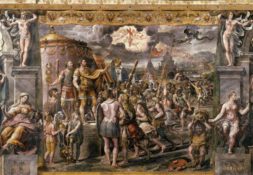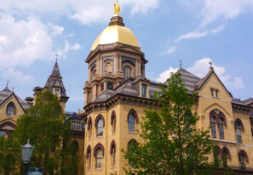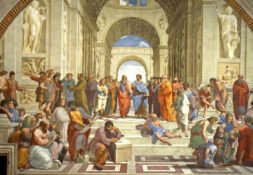On my parents’ wedding day 32 years ago, a Catholic priest saw my Irish Catholic grandfather pacing back and forth in the parking lot of the church where a Greek Orthodox priest was about to marry my parents. My grandfather explained to the priest his feelings of trepidation about my Catholic mother being married by a priest of another religion, even though my grandfather had written a letter to the Vatican to confirm that this wedding would be valid according to the Catholic Church.
Father Tinney—who later went on to baptize me and my two older brothers—kindly reassured my grandfather of the Catholic sacramental validity of a wedding administered by a Greek Orthodox priest. No longer feeling anxious, my grandfather stepped back into the church and walked my mother down the aisle with confidence, bringing together a Roman Catholic wife and a Greek Orthodox husband.
Throughout my entire life I have felt a part of both of these religions. By practicing them in tandem, I clearly recognized the countless commonalities between them. My brothers and I were baptized as infants in a Catholic church by a Catholic priest, but our Greek Orthodox priest was present during the ceremonies and he gave us ceremonial Greek Orthodox baptisms as well.
The Greek Orthodox church in my hometown has a very small congregation, so Mass is only celebrated there once a month. Before I went to college, my family and I would attend Mass there once a month and Catholic Mass the rest of the weeks of the month. My mother would always attend Catholic Mass every Sunday in addition to attending Greek Church once a month, a practice that I have recently adopted.
When I was a child, the only differences I could perceive between the Orthodox and Catholic Masses were that people talked funny at the Greek Masses, the Catholic church had statues whereas the Greek church had paintings, and, as my nephew put it, “Greek church is the one with baklava!”
As I grew up, I became more aware of how very similar the Greek Church is to the Catholic Church. The order of the Mass is nearly identical, with the Liturgy of the Word followed by the Liturgy of the Eucharist. In fact, for over 10 centuries, the two churches were one and the same. The basic tenets of the two faiths are the same, including a deep reverence for the Blessed Virgin Mary, the Trinity, and Jesus’ teachings in the Gospels. The most prominent similarity for me is the belief in the Real Presence, termed “transubstantiation,” or the literal transformation of the bread and wine into the Body and Blood of Christ. For me, this belief is the center of the Mass, regardless of the religion celebrating it.
One main difference between the Greek Orthodox and Catholic Churches is the organization of the hierarchies. In the Great Schism of 1100 AD, the Eastern Christian Church split from the Western Catholic Church mainly because the Eastern Church would not accept a pope as the highest-ranking member of their hierarchy. The Eastern Orthodox churches today include a dozen different regions, Greek Orthodox being one of them. The Greek Orthodox Church’s highest-ranking church official is the Ecumenical Patriarch of Constantinople, but the Orthodox churches as a whole do not have a single earthly head comparable to the pope of the Roman Catholic Church.
Recently, Pope Francis and Patriarch Bartholomew I have continued the work of their predecessors in making great strides towards bolstering relations between the Greek Orthodox and Catholic Churches. This week, Pope Francis travelled to Turkey to meet with Patriarch Bartholomew to discuss what these churches have in common, and to speak as one voice against global persecution of Christians.
These two men intend not to dwell on the past animosity between their two religions, but to focus on how they can work together for the good of all.
Dositheos Anagnostopoulos, the spokesman for the Orthodox Ecumenical Patriarchate in Istanbul, seemed hopeful about this meeting. He said, “The people in charge now are looking for common ground rather than what’s wrong with the other side. They have finally figured out that they have so many areas of common concern that it is so much more effective to speak together.”
I could not be more elated that these two holy men chose to come together and focus on what their churches have in common, rather than on what tore them apart years ago. I have felt a part of both churches for my entire life, and I feel incredibly blessed that Pope Francis and Patriarch Bartholomew intend to spread this great message of unity and mutual compassion across the globe.
Caroline Corsones is a junior English major with a minor in business economics. As her Πaππou would say, there are two types of people in this world: people who are Greek, and people who wish they were Greek. Contact her at ccorsone@nd.edu.





Leave a Reply